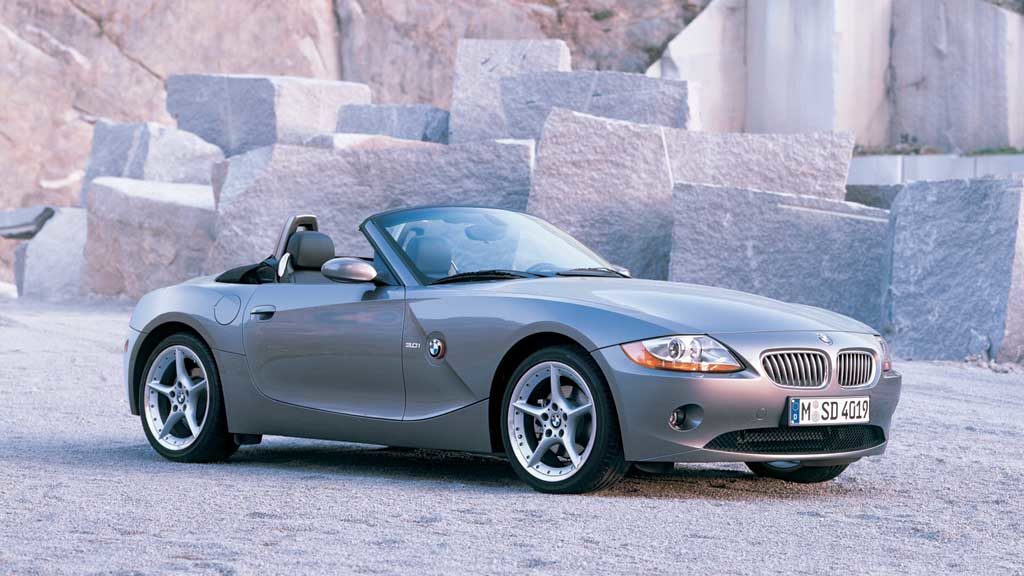Like most of you, I’ve spent a lot of time thinking about BMW values this year. I wouldn’t necessarily blame myself—after spending a year browsing Craigslist, Bring a Trailer, and the BMW CCA Classifieds, we’ve all had plenty of time to peruse the Internet in an attempt to find the next fixation. Now, as we rejoin our friends at car events, a vehicle designed strictly for driving pleasure is at the top of my search history—
And that brings us to the BMW Z3 and Z4 roadsters.
It seems like a fever dream now, but in 2019, a solid Z3 of the non-M variety was a $3,500 car. Yes, this price range would be likely to feature the older M52 six-cylinder, or even the 1.9-liter M44 four-cylinder, but these are robust, reliable power plants, especially at typical Z-car mileage of the time, which was often less than the equivalent E36 3 Series (the chassis on which the Z3 was based).
Of course, it wouldn’t have been a concours-ready car, but it would be a complete, mostly-inspectable roadster that could tear up any mountain road you could throw at it. For well under $5,000, you could have a functioning canyon-carver or boulevard cruiser, featuring a secondhand set your favorite OEM wheels from 1997–2003, and enough room in the budget for a couple of spare coolant reservoirs, just in case.
Okay, fine, this is the European version, but check out those Euro-spec steelies!
Even more painful, however, is the memory of the affordable BMW Z4. The Internet has revealed the first-generation Z4 to be polarizing, something I’ve always found to be surprising; to me, the Z4 feels like one of the best-aging, most modern designs to emerge from the Chris Bangle era of BMW design (although the car can be more accurately attributed to Danish designer Anders Warming). While the E65 7 Series and E60 5 Series of the same era became larger and rounder than their predecessors, the Z4’s razor-sharp lines and wide, chiseled kidneys make it look two decades newer than the Z3 it ostensibly replaced—but for a time, these cars could be acquired in the ballpark of $4,000 to $4,500.
The first Z4 roadsters emerged from BMW Plant Spartanburg in 2002 for the 2003 model year—which, like it or not, was nearly twenty years ago. Admittedly, this puts it right on track for a valuation renaissance, but thanks to the pandemic bump, we’re entering the world of consistent five-figure Z4s rather early—and unlike other, more modern markets, I don’t think they’re going down anytime soon.
The current selection of clean-title E85 Z4 roadsters on Craigslist in LA: Yes, most are automatics.
There are a couple reasons for that. First, the Z4 has safely left the age range for a typical daily driver, with the newest E85 roadsters thirteen years old now. Secondary and hobby vehicles have experienced some of the most rapid instances of appreciation this year, as owners with disposable income look at the world and say, “If not now, when?”
As a secondary vehicle, the Z4 has a lot going for it. The drivetrains of the non-M variants are robust and common, with pre- and post-LCI cars using the well-proven M54 and N52 engines, respectively—powerplants number in the millions, when you include all the models globally that used them. Sure, there are a couple maintenance needs that should be addressed—the crankcase-ventilation system, oil-filter-housing gasket, and plastic cooling-system components in the M54 cars, and the valve-cover assembly (with integrated oil separator) in the N52—but both are 250,000-mile drivetrains when properly maintained. This is good news in something like an E90, and better news with the E85 Z4, which didn’t see nearly as many miles as an equivalent 3 Series.
Finally, there’s also the BMW appreciation-cycle timeline referenced earlier. It’s no different than the recognition of the 2002, or the E30, or the E36 M3. Like those cars, the Z4 must also cycle through depreciation, bottoming out, and beginning to rise again—and like the rest of the BMW model range in the early 2000s, it represents the final mix of analog chassis design, modern diagnostics, and modern reliability.
After tax, that’s ten grand for a 2.5-liter Z4 in Seattle.
So, as painful as it might be to reminisce about the cheap $3,500 Z3s and $4,000 Z4s of 2019, there is something of a consolation prize: The Z4 should never have been that cheap to begin with. After all, there’s precedent here: I’m sure that there’s a portion of BMW M enthusiasts who have been skimming eagerly, waiting to hear mention of the M-roadster and M-coupe markets—S54-powered cars that have stayed in the $20,000–$30,000 range, even as the the E46 M3 sank into the low five figures. They’re fantastic cars, with healthy suspension upgrades and the final iteration of a brilliant engine.
But is a three-liter Z4 just 20% of the the car that an S54-powered M roadster is? I don’t think so.
Of course, this discussion comes with the obvious caveat that the collector-car market is experiencing a tremendous surge right now. Extreme conditions or not, there’s a bittersweet sense of redemption in seeing the Z4 get some recognition. After all, it’s a good-looking car, from one of the best eras of BMW chassis design. Even if they’re not four grand, they’ll still be in my Craigslist history for years to come.—David Rose
[Photos courtesy BMW AG, David Rose.]
